Abstract
In order to assess the value of haemodynamic monitoring in the coronary care unit for long term prognosis after recovery of an acute myocardial infarction, the records of two groups of consecutive patients were reviewed retrospectively. From 254 patients, 32 (13%) died in the hospital and nine patients had to be excluded from subsequent follow-up for various reasons. Four year mortality among the 213 patients who were discharged from the hospital and could be followed up was 26%. Of the haemodynamic variables measured on admission a high pulmonary capillary wedge pressure, exceeding 18 mmHg, and a low mixed venous oxygen saturation, less than 60%, were not only associated with a high hospital but also with a high four year mortality, whereas a low systolic blood pressure (less than 100 mmHg), an important prognosticator during admission to hospital, was only of minor significance thereafter. A negative value on admission of a specific index 0.24 X systolic blood pressure (mmHg) -0.217 X pulmonary capillary wedge pressure (mmHg)+0.234 X mixed venous oxygen saturation (%)-13.1 developed for the prediction of short term survival was also associated with a much higher four year mortality than a positive value. Low cardiac index on admission could be correlated with high mortality during the first two years after discharge, whereas only 9% of patients with a higher cardiac index died. Haemodynamic monitoring in the coronary care unit is thus not only relevant for the immediate prognosis, but a high mortality risk during hospital stay persists for several years after discharge.
Full text
PDF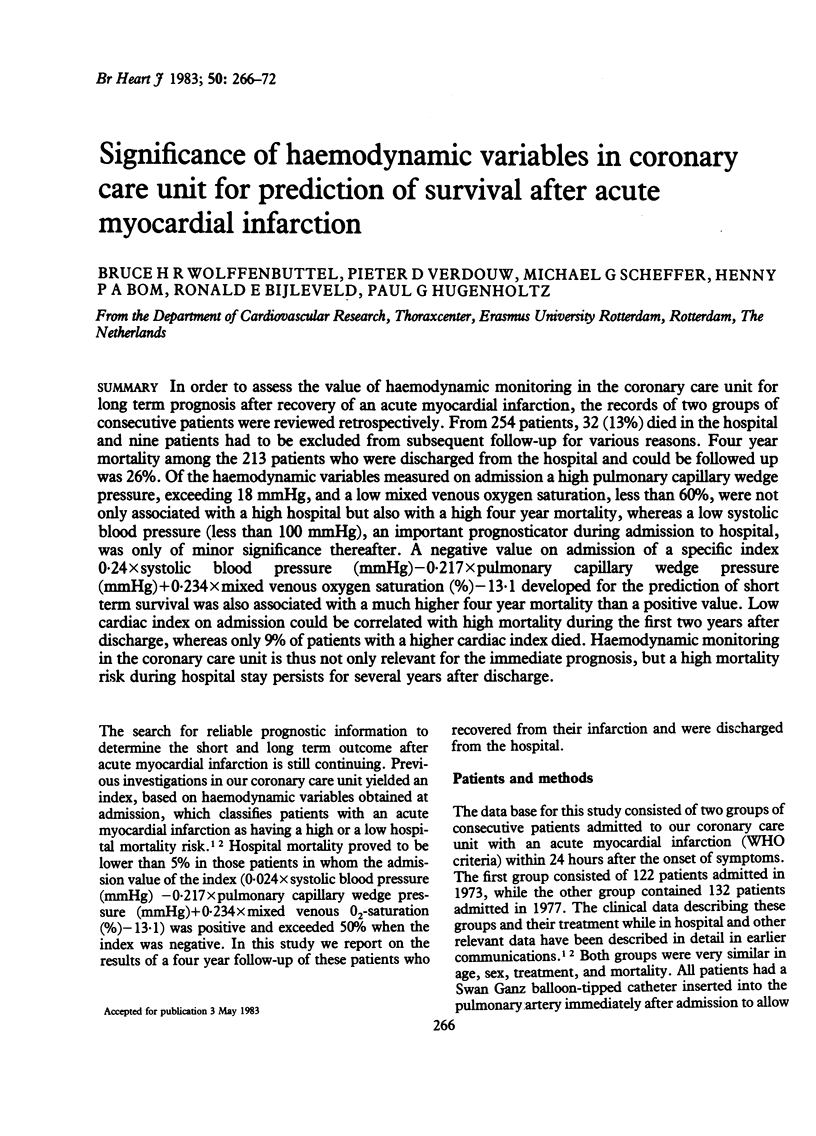
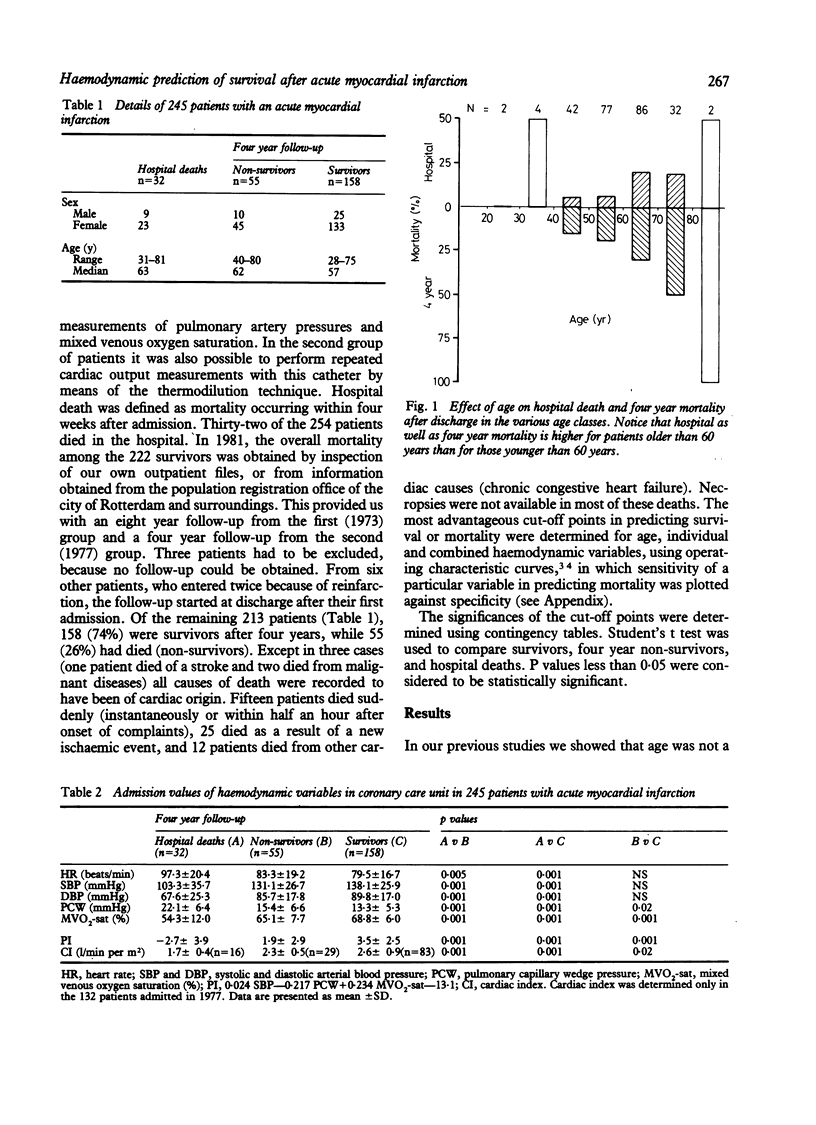
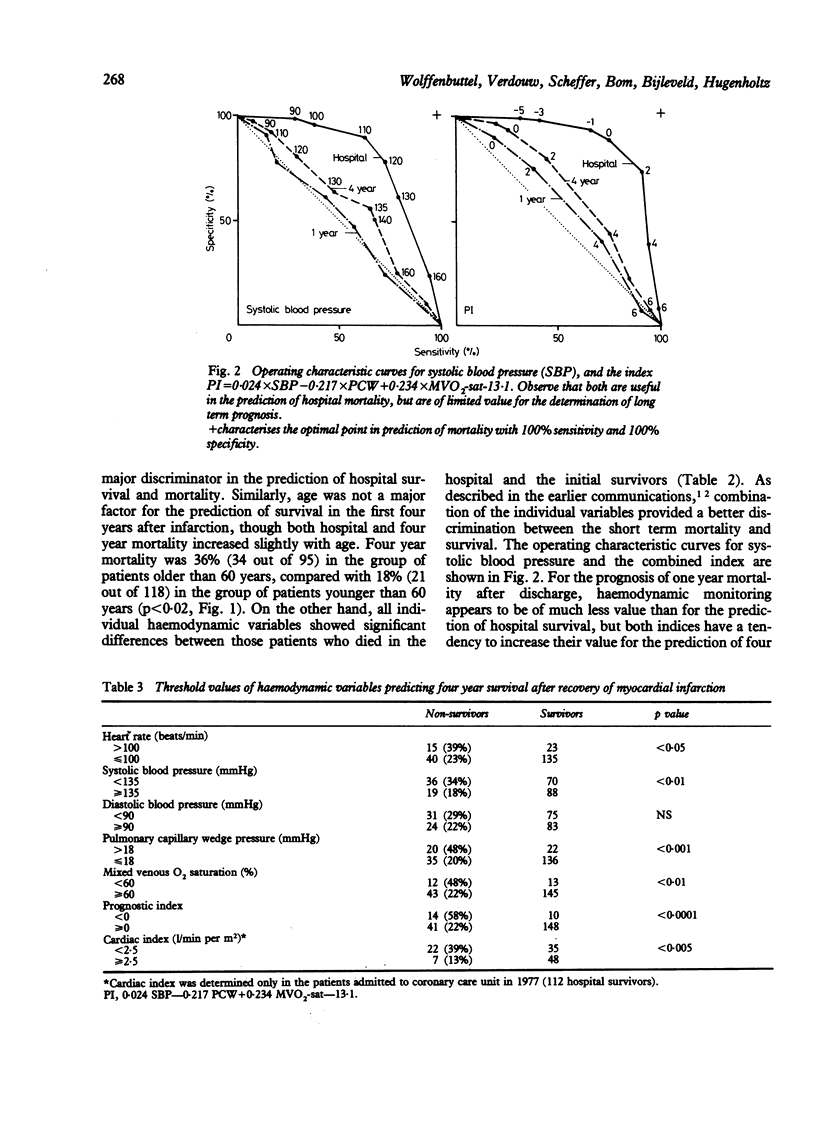
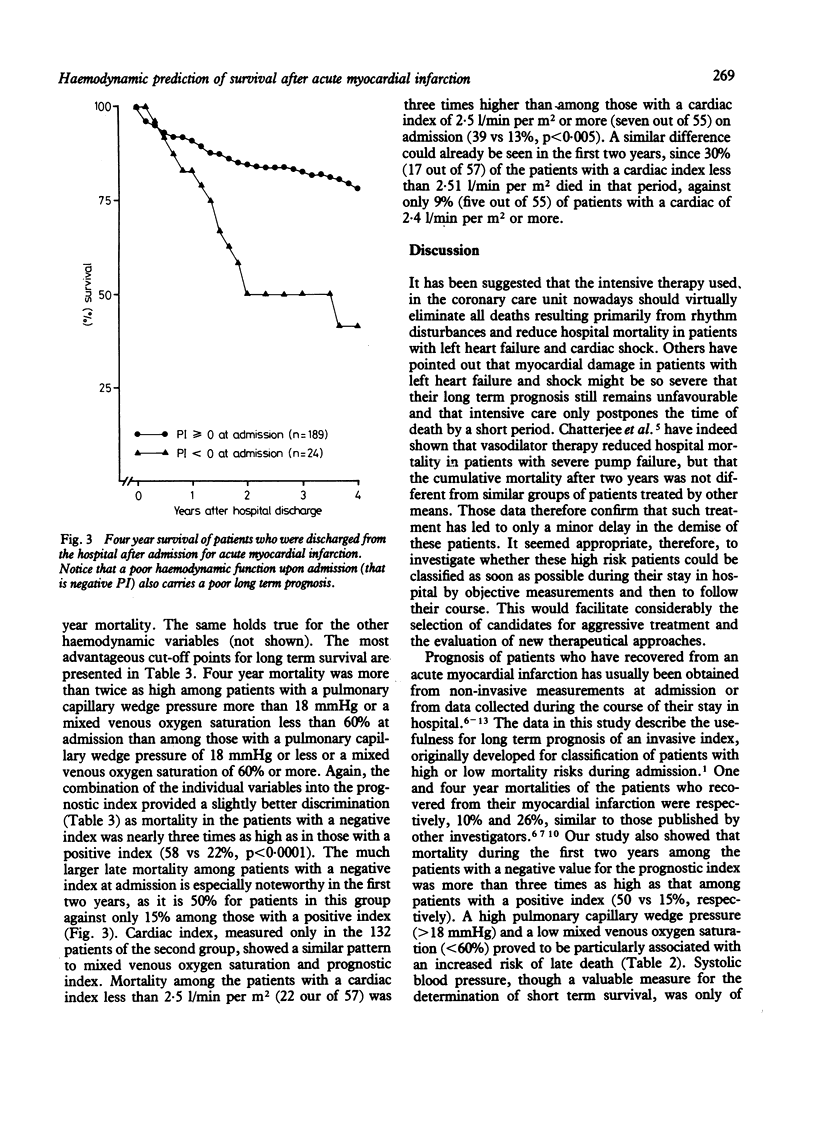
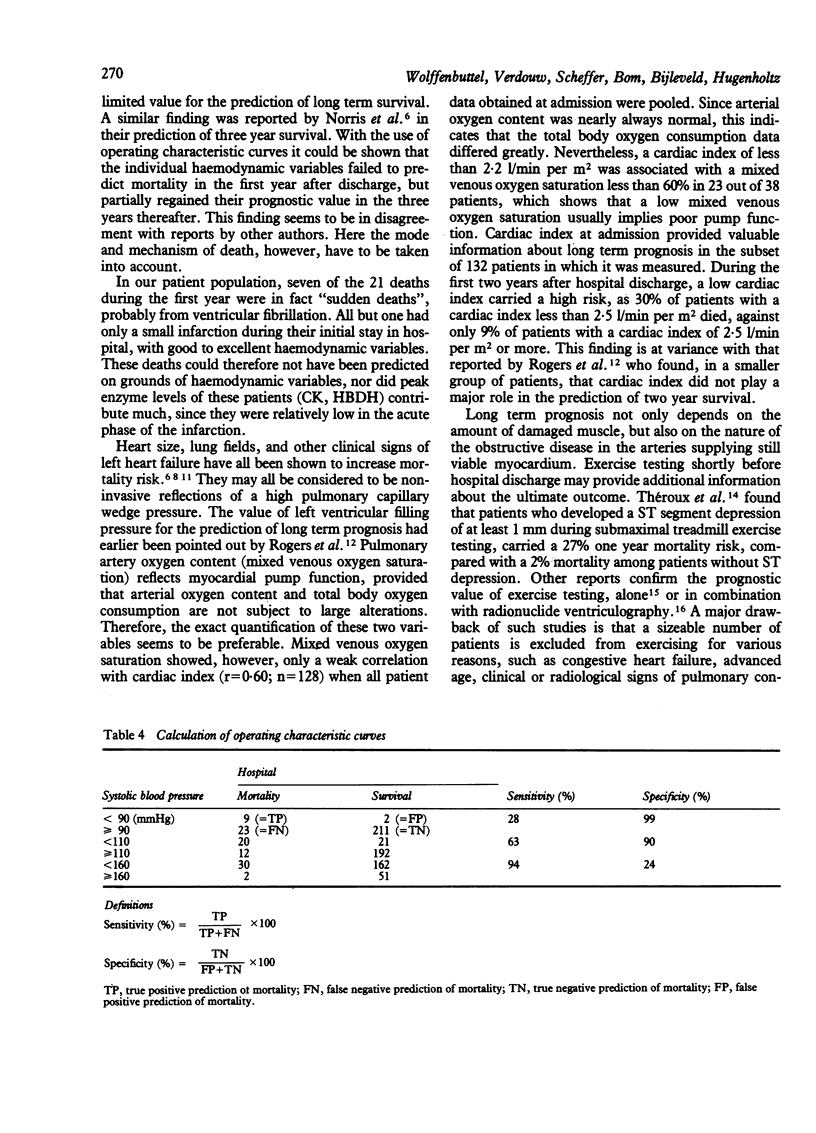
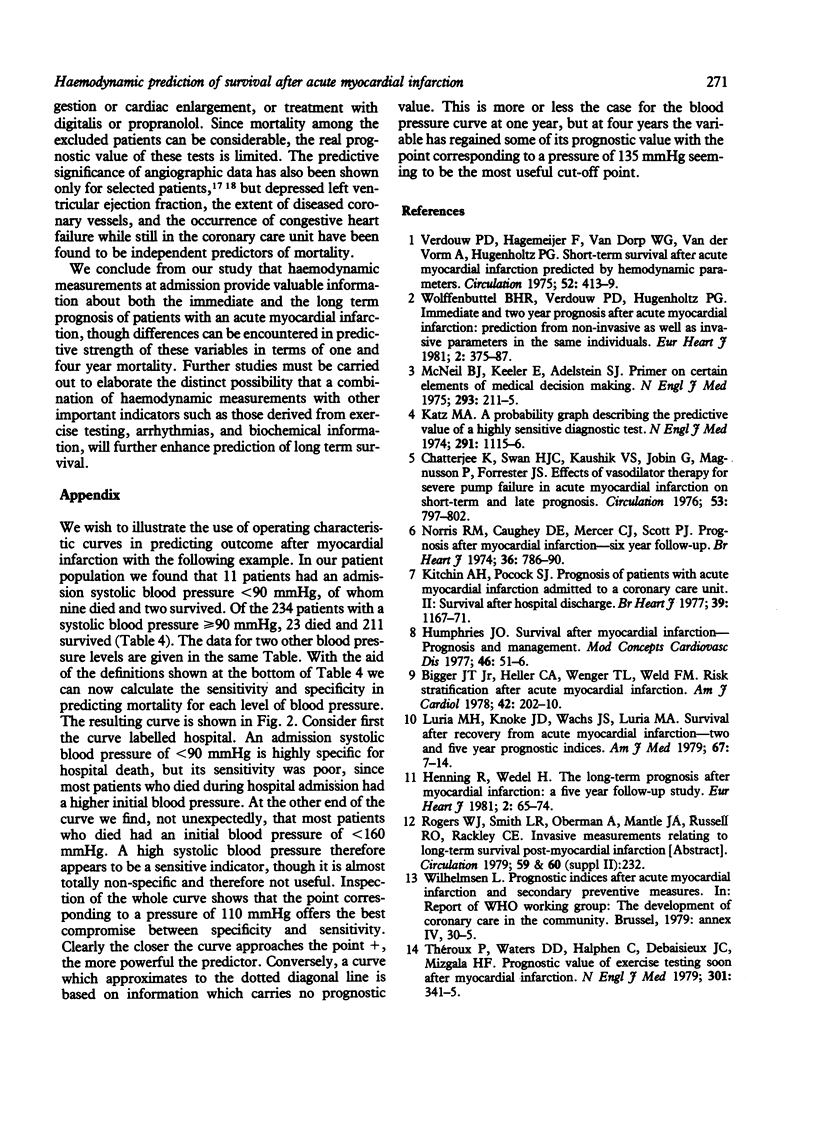
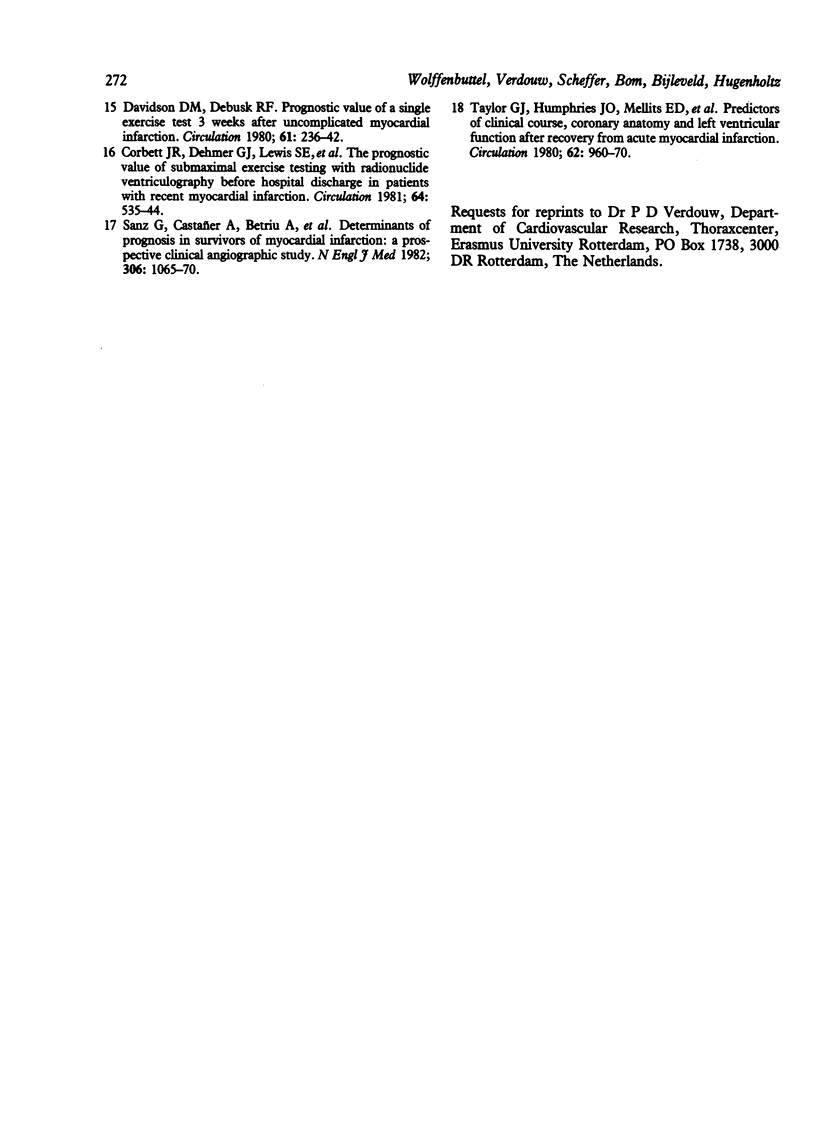
Selected References
These references are in PubMed. This may not be the complete list of references from this article.
- Bigger J. T., Heller C. A., Wenger T. L., Weld F. M. Risk stratification after acute myocardial infarction. Am J Cardiol. 1978 Aug;42(2):202–210. doi: 10.1016/0002-9149(78)90901-3. [DOI] [PubMed] [Google Scholar]
- Chatterjee K., Swan H. J., Kaushik V. S., Jobin G., Magnusson P., Forrester J. S. Effects of vasodilator therapy for severe pump failure in acute myocardial infarction on short-term and late prognosis. Circulation. 1976 May;53(5):797–802. doi: 10.1161/01.cir.53.5.797. [DOI] [PubMed] [Google Scholar]
- Corbett J. R., Dehmer G. J., Lewis S. E., Woodward W., Henderson E., Parkey R. W., Blomqvist C. G., Willerson J. T. The prognostic value of submaximal exercise testing with radionuclide ventriculography before hospital discharge in patients with recent myocardial infarction. Circulation. 1981 Sep;64(3):535–544. doi: 10.1161/01.cir.64.3.535. [DOI] [PubMed] [Google Scholar]
- Henning R., Wedel H. The long-term prognosis after myocardial infarction: a five year follow-up study. Eur Heart J. 1981 Feb;2(1):65–74. doi: 10.1093/oxfordjournals.eurheartj.a061165. [DOI] [PubMed] [Google Scholar]
- Humphries J. O. Survival after myocardial infarction: prognosis and management. Mod Concepts Cardiovasc Dis. 1977 Nov;46(11):51–56. [PubMed] [Google Scholar]
- Katz M. A. A probability graph describing the predictive value of a highly sensitive diagnostic test. N Engl J Med. 1974 Nov 21;291(21):1115–1116. doi: 10.1056/NEJM197411212912106. [DOI] [PubMed] [Google Scholar]
- Kitchin A. H., Pocock S. J. Prognosis of patients with acute myocardial infarction admitted to a coronary care unit. II. Survival after hospital discharge. Br Heart J. 1977 Nov;39(11):1167–1171. doi: 10.1136/hrt.39.11.1167. [DOI] [PMC free article] [PubMed] [Google Scholar]
- Luria M. H., Knoke J. D., Wachs J. S., Luria M. A. Survival after recovery from acute myocardial infarction. Two and five year prognostic indices. Am J Med. 1979 Jul;67(1):7–14. doi: 10.1016/0002-9343(79)90062-7. [DOI] [PubMed] [Google Scholar]
- McNeil B. J., Keller E., Adelstein S. J. Primer on certain elements of medical decision making. N Engl J Med. 1975 Jul 31;293(5):211–215. doi: 10.1056/NEJM197507312930501. [DOI] [PubMed] [Google Scholar]
- Norris R. M., Caughey D. E., Mercer C. J., Scott P. J. Prognosis after myocardial infarction. Six-year follow-up. Br Heart J. 1974 Aug;36(8):786–790. doi: 10.1136/hrt.36.8.786. [DOI] [PMC free article] [PubMed] [Google Scholar]
- Sanz G., Castañer A., Betriu A., Magriña J., Roig E., Coll S., Paré J. C., Navarro-López F. Determinants of prognosis in survivors of myocardial infarction: a prospective clinical angiographic study. N Engl J Med. 1982 May 6;306(18):1065–1070. doi: 10.1056/NEJM198205063061801. [DOI] [PubMed] [Google Scholar]
- Taylor G. J., Humphries J. O., Mellits E. D., Pitt B., Schulze R. A., Griffith L. S., Achuff S. C. Predictors of clinical course, coronary anatomy and left ventricular function after recovery from acute myocardial infarction. Circulation. 1980 Nov;62(5):960–970. doi: 10.1161/01.cir.62.5.960. [DOI] [PubMed] [Google Scholar]
- Théroux P., Waters D. D., Halphen C., Debaisieux J. C., Mizgala H. F. Prognostic value of exercise testing soon after myocardial infarction. N Engl J Med. 1979 Aug 16;301(7):341–345. doi: 10.1056/NEJM197908163010701. [DOI] [PubMed] [Google Scholar]
- Verdouw P. D., Hagemeijer F., Dorp W. G., Vrom A. V., Hugenholtz P. G. Short-term survival after acute myocardial infarction predicted by hemodynamic parameters. Circulation. 1975 Sep;52(3):413–419. doi: 10.1161/01.cir.52.3.413. [DOI] [PubMed] [Google Scholar]
- Wolffenbuttel B. H., Verdouw P. D., Hugenholtz P. G. Immediate and two year prognosis after acute myocardial infarction: prediction from non-invasive as well as invasive parameters in the same individuals. Eur Heart J. 1981 Oct;2(5):375–387. doi: 10.1093/oxfordjournals.eurheartj.a061222. [DOI] [PubMed] [Google Scholar]


